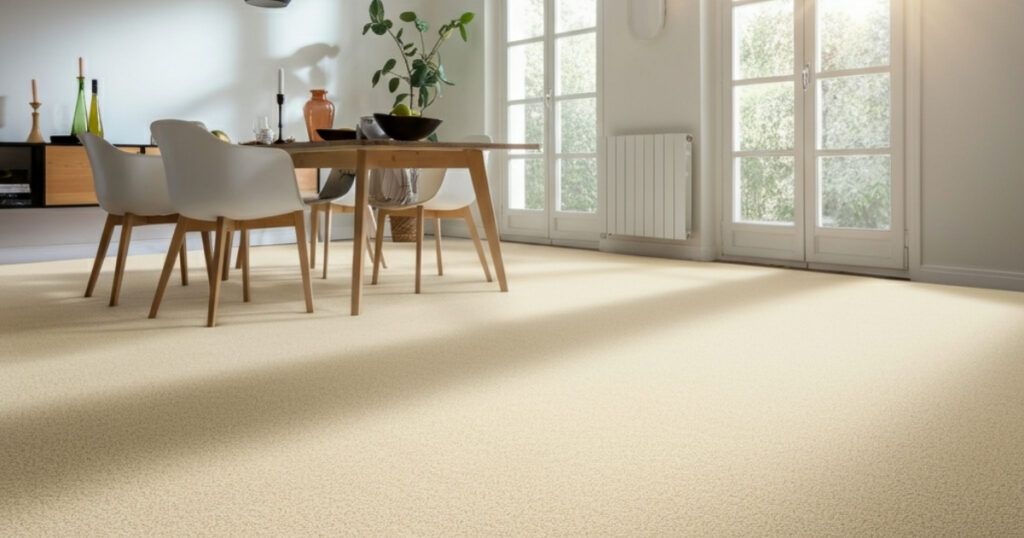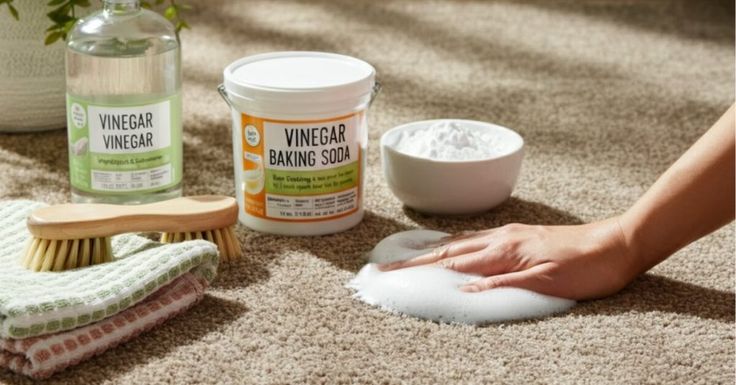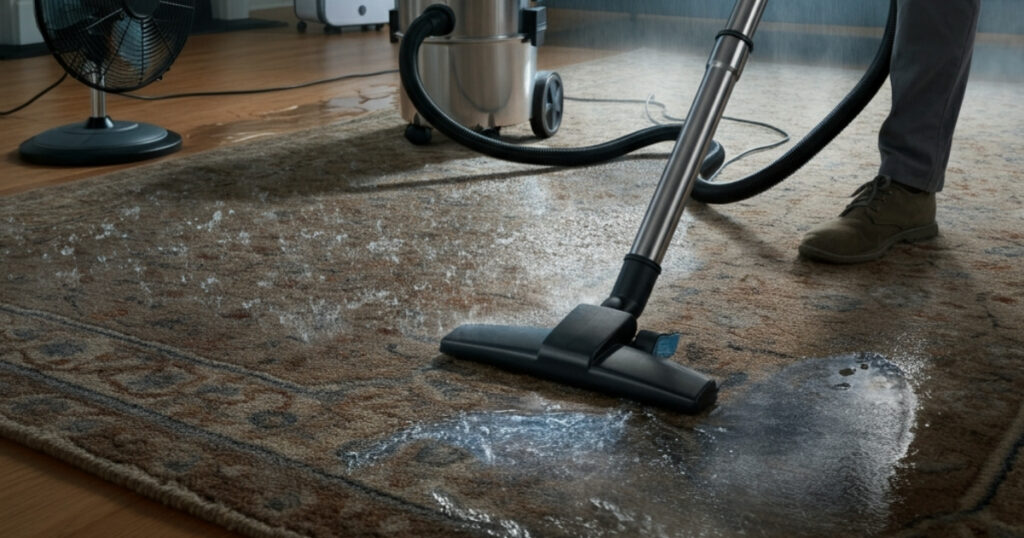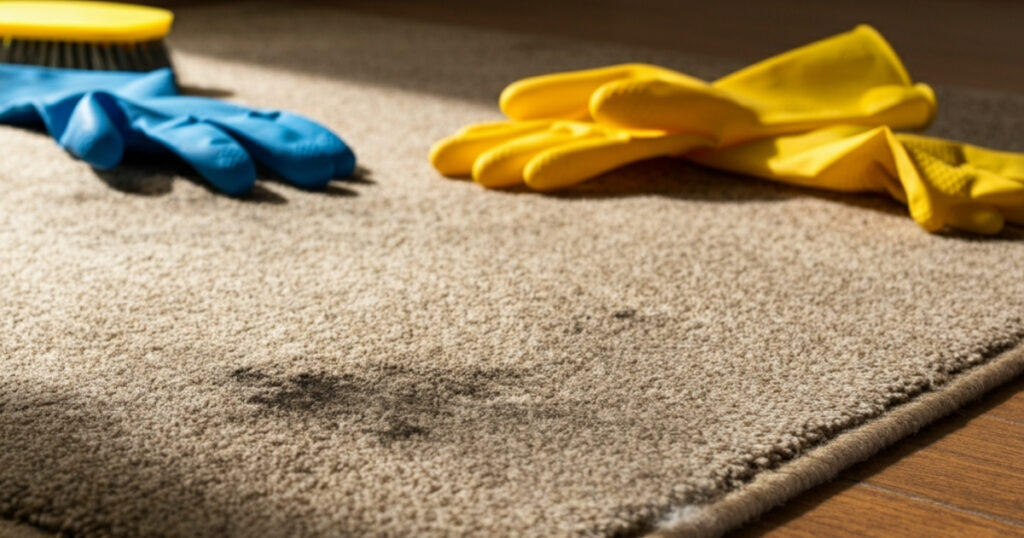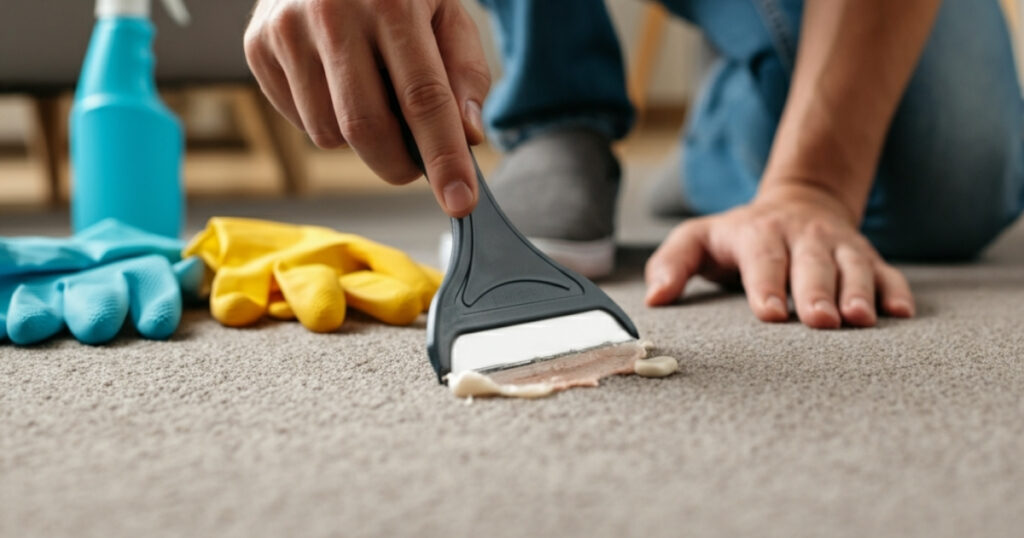As an Amazon Associate, I earn from qualifying purchases.
Knowing how long carpet lasts is essential for any homeowner. It helps you budget for future replacements and understand how to get the most out of your current flooring. While the average carpet has a lifespan of 5 to 15 years, this can vary significantly based on several factors.
This guide will walk you through everything that affects your carpet’s longevity, from the material it’s made of to how well you maintain it. By the end, you’ll have a clear understanding of your carpet’s potential lifespan and know exactly what to do to extend it.
Contents Overview
Understanding Carpet Lifespan
The question of “how long does carpet last?” doesn’t have a single, simple answer. A carpet’s lifespan depends on a combination of its quality, the amount of foot traffic it endures, and the care it receives. Generally, you can expect a good quality carpet to last for about a decade under normal residential use. However, a lower-grade carpet in a high-traffic area might show significant wear in just a few years.
Conversely, a premium carpet in a rarely used guest room could look new for well over 15 years. Therefore, understanding the key factors that influence durability is crucial for making an informed purchase and for maintaining your investment over time.
Key Factors That Determine How Long Carpet Lasts
Several elements play a role in determining your carpet’s durability and overall lifespan. Let’s look at the most important ones.
Carpet Material and Fiber Type
The material your carpet is made from is arguably the most significant factor in its longevity. Different fibers have unique characteristics that affect their resilience, stain resistance, and feel.
- Nylon: This is the most durable and resilient synthetic carpet fiber available. It stands up exceptionally well to heavy foot traffic, making it an excellent choice for hallways, stairs, and family rooms. With proper care, a high-quality nylon carpet can last 12 to 15 years or even longer. It’s also known for its good stain resistance, especially when treated.
- Polyester (PET): Known for its luxurious feel and vibrant color options, polyester is also naturally stain and fade-resistant. While not as resilient as nylon, advancements in polyester technology have greatly improved its durability. It’s a good mid-range option that can last 5 to 10 years, particularly in low to medium-traffic areas.
- Olefin (Polypropylene): Olefin is highly resistant to moisture, mildew, and staining, which makes it suitable for basements or even outdoor spaces. However, it’s less resilient than nylon and can crush under heavy foot traffic. Its lifespan is typically shorter, around 3 to 8 years, making it better for low-traffic areas.
- Wool: As a natural fiber, wool is a premium, long-lasting option. It’s incredibly durable, soft, and naturally flame-retardant. A well-maintained wool carpet can last for 20 years or more. While it’s a significant investment, its longevity and timeless appeal make it a worthwhile choice for many homeowners. However, it can be more susceptible to staining than synthetic fibers.
Carpet Pile and Density
The “pile” refers to the loops of fiber that make up the carpet’s surface. Both the height of the pile and how densely the fibers are packed together impact how long the carpet lasts.
- Pile Height: Low-pile carpets, where the fibers are short and tight, are generally more durable and easier to clean. They don’t crush or mat as easily as high-pile carpets. High-pile or “shag” carpets feel plush and luxurious but can be harder to maintain and may show wear more quickly in high-traffic zones.
- Density: Carpet density refers to how closely the fibers are tufted together. A denser carpet has more fiber per square inch, making it more resilient and durable. You can test density by bending a carpet sample back on itself. The less of the backing you can see, the denser and more durable the carpet is.
Quality of Padding
The carpet pad, or underlay, is the layer of cushioning between the carpet and the subfloor. It might be out of sight, but it’s critical for your carpet’s longevity and comfort. A good quality pad acts as a shock absorber, protecting the carpet fibers from being crushed and worn down by foot traffic. It also helps with noise insulation and makes the carpet feel softer underfoot.
Choosing the wrong pad can significantly shorten your carpet’s life. A pad that’s too thin won’t provide enough support, while one that’s too thick can cause the carpet to stretch and develop wrinkles. Always follow the manufacturer’s recommendation for pad thickness and density to ensure you’re protecting your investment.
Foot Traffic Levels
The amount of use a carpet gets is a major factor in its lifespan. A carpet in a busy family room or main hallway will wear out much faster than one in a formal living room or guest bedroom.
- High-Traffic Areas: Hallways, stairs, and main living areas see constant use. For these spaces, you’ll need a highly durable carpet, such as a low-pile nylon, to withstand the wear and tear.
- Medium-Traffic Areas: Bedrooms and home offices fall into this category. A good quality polyester or a mid-grade nylon carpet will typically perform well here.
- Low-Traffic Areas: Guest rooms or formal dining rooms that are used infrequently can accommodate less durable, more luxurious carpet styles, like a high-pile or wool carpet.
Regular Maintenance and Cleaning
How you care for your carpet has a direct impact on how long it lasts. Dirt, dust, and debris are abrasive. As people walk on the carpet, these tiny particles act like sandpaper, grinding away at the carpet fibers and causing them to break down prematurely.
Regular vacuuming is the most important maintenance task. It removes this abrasive grit before it can do damage. Professional deep cleaning at least once a year is also essential. This process removes the deep-seated dirt and oils that regular vacuuming can’t reach, which helps to restore the carpet’s appearance and extend its life.
How to Make Your Carpet Last Longer
Now that you know what affects your carpet’s lifespan, here are some practical steps you can take to maximize it. Following these tips will help keep your flooring looking its best for years to come.
1. Vacuum Regularly and Correctly
Consistent vacuuming is your first line of defense.
- Frequency: For high-traffic areas, vacuum at least twice a week. For low-traffic areas, once a week is usually sufficient.
- Technique: Move the vacuum slowly over the carpet in multiple directions to lift the pile and effectively remove dirt.
- The Right Vacuum: Use a vacuum with a beater bar or rotating brush for cut-pile carpets, but consider one with adjustable height or a suction-only option for loop-pile (Berber) carpets to avoid snagging the fibers.
2. Deal with Spills Immediately
Stains can become permanent if they are not treated quickly.
- Blot, Don’t Rub: When a spill occurs, gently blot the area with a clean, dry cloth, working from the outside of the spill inward to prevent it from spreading.
- Use the Right Cleaner: Use a carpet spot cleaner that is appropriate for the type of spill and your carpet’s material. Always test the cleaner on an inconspicuous area first to ensure it doesn’t discolor the fibers.
3. Schedule Professional Deep Cleaning
While regular vacuuming is crucial, it’s not enough on its own.
- Annual Cleaning: Plan for a professional deep cleaning using hot water extraction (steam cleaning) at least once every 12 to 18 months. This is often a requirement to keep your carpet’s warranty valid.
- Benefits: Professional cleaning removes oily soils, allergens, and deeply embedded grit that vacuums leave behind, refreshing the fibers and extending the carpet’s life.
4. Use Doormats and Area Rugs
Prevent dirt from getting onto your carpet in the first place.
- Entrance Mats: Place high-quality doormats at every entrance to your home to trap dirt, moisture, and debris from shoes.
- Area Rugs: Use area rugs in high-traffic zones like hallways and living areas. They protect the carpet underneath from concentrated wear and can be replaced more easily and inexpensively than the entire carpet.
5. Rearrange Your Furniture Periodically
Heavy furniture can crush carpet fibers and leave permanent indentations.
- Rotate Layout: By rearranging your furniture every year or so, you can alter the main traffic patterns in the room, which helps the carpet wear more evenly.
- Furniture Coasters: Use furniture coasters under the legs of heavy items to distribute the weight and minimize crushing of the carpet pile.
Signs It’s Time to Replace Your Carpet
Even with the best care, all carpets eventually reach the end of their life. Here are some clear indicators that it’s time for a replacement.
- Significant Stains: If you have multiple large stains that won’t come out even with professional cleaning, it’s a sign the carpet is past its prime.
- Matting and Crushing: When carpet fibers in high-traffic areas become matted down and can’t be fluffed back up by vacuuming or cleaning, the pile has lost its resiliency.
- Lingering Odors: If your carpet retains unpleasant smells from pets, spills, or mildew, even after a deep clean, the odors may have penetrated the padding and subfloor.
- Visible Wear and Tear: Rips, tears, and bald spots are obvious signs that your carpet needs to be replaced.
- Increased Allergy Symptoms: Old carpets can trap large amounts of allergens like dust, dander, and pollen. If members of your household are experiencing worsening allergies, your old carpet could be the culprit.
- Worn-Out Padding: If you notice unevenness, wrinkling, or a crinkling sound when you walk on the carpet, the underlying pad is likely deteriorating.
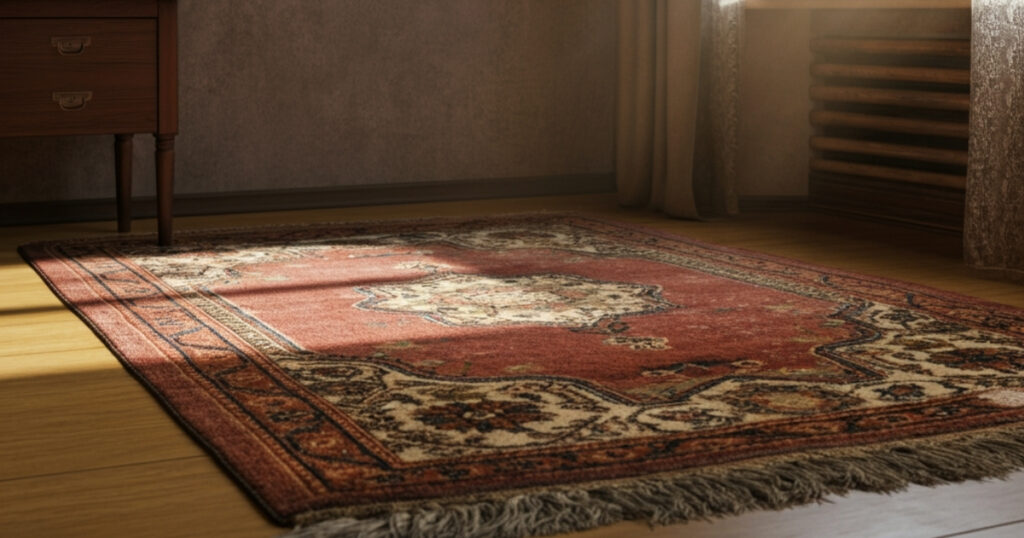
Answering Your Questions About Carpet Lifespan
Here are answers to some common questions homeowners have about how long their carpet will last.
- Can a carpet last 20 years?
Yes, it’s possible. A high-quality wool or premium nylon carpet that is meticulously maintained in a low-traffic area can last 20 years or more. - How long does cheap carpet last?
No, cheaper carpets, often made from builder-grade olefin or low-density polyester, typically have a much shorter lifespan. You can expect them to last between 3 and 5 years, especially in areas with regular foot traffic. - Does carpet padding affect how long the carpet lasts?
Yes, absolutely. A quality carpet pad acts as a shock absorber, protecting the carpet fibers from being crushed. Using the right padding is one of the most important things you can do to extend the life of your carpet. - How often should I replace my carpet?
No, there is no set rule. You should replace your carpet when you notice significant signs of wear, such as major stains, matting, bad odors, or visible damage. On average, most homeowners replace their carpet every 7 to 10 years.
Invest in Your Carpet’s Future
Understanding how long carpet lasts involves looking beyond the initial purchase price and considering factors like material, pile, padding, and maintenance. By choosing a quality carpet that suits your lifestyle and committing to a regular care routine, you can significantly extend its life, ensuring it remains a comfortable and attractive feature of your home for many years. When the time for replacement does come, you’ll be well-equipped to make a smart, long-lasting investment.
As an Amazon Associate, I earn from qualifying purchases.

